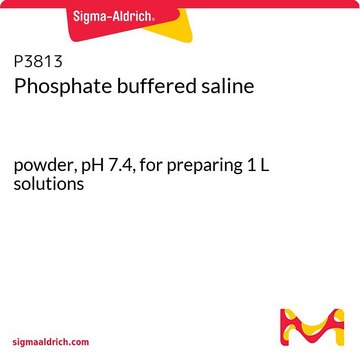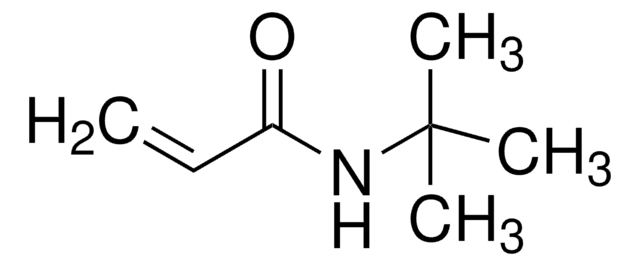Wichtige Dokumente
P52652
Propylencarbonat
ReagentPlus®, 99%
Synonym(e):
1,2-Propandiol, zyklisches Carbonat, 4-Methyl-1,3-dioxolan-2-one
About This Item
Empfohlene Produkte
Qualität
reagent
Qualitätsniveau
Dampfdruck
0.13 mmHg ( 20 °C)
0.98 mmHg ( 50 °C)
Produktlinie
ReagentPlus®
Assay
99%
Form
liquid
Selbstzündungstemp.
851 °F
Expl.-Gr.
14.3 %
dilution
(for general lab use)
Brechungsindex
n20/D 1.421 (lit.)
pH-Wert
7 (20 °C, 200 g/L)
bp
240 °C (lit.)
mp (Schmelzpunkt)
−55 °C (lit.)
Dichte
1.204 g/mL at 25 °C (lit.)
SMILES String
CC1COC(=O)O1
InChI
1S/C4H6O3/c1-3-2-6-4(5)7-3/h3H,2H2,1H3
InChIKey
RUOJZAUFBMNUDX-UHFFFAOYSA-N
Suchen Sie nach ähnlichen Produkten? Aufrufen Leitfaden zum Produktvergleich
Verwandte Kategorien
Allgemeine Beschreibung
Anwendung
- Extraction of polyhydroxy alkanoates from biomass.
- Photodegradation of methylene blue.
- Synthesis of glyceryl caffeate esters via lipase-catalyzed esterification.
Rechtliche Hinweise
Signalwort
Warning
H-Sätze
Gefahreneinstufungen
Eye Irrit. 2
Lagerklassenschlüssel
10 - Combustible liquids
WGK
WGK 1
Flammpunkt (°F)
269.6 °F - closed cup
Flammpunkt (°C)
132 °C - closed cup
Hier finden Sie alle aktuellen Versionen:
Besitzen Sie dieses Produkt bereits?
In der Dokumentenbibliothek finden Sie die Dokumentation zu den Produkten, die Sie kürzlich erworben haben.
Kunden haben sich ebenfalls angesehen
Unser Team von Wissenschaftlern verfügt über Erfahrung in allen Forschungsbereichen einschließlich Life Science, Materialwissenschaften, chemischer Synthese, Chromatographie, Analytik und vielen mehr..
Setzen Sie sich mit dem technischen Dienst in Verbindung.










